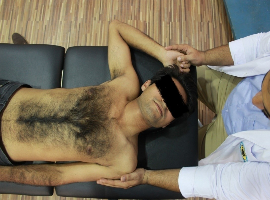Abdul Rashad1*, Kiran Iqbal2, Subbayal Shaikh3, Rabia Intikhab4, Heba Haider5, Arbia Yousfani6, Alisha Noreen7 and Rabia Rauf8
1Senior Lecturer, United College of Physical Therapy, Pakistan
2Lecturer, University of Sialkot, Pakistan
3Assistant Professor, Bhitai Institute of Physiotherapy and Rehabilitation Sciences Mirpurkhas, Pakistan
4Principal and Assistant Professor, Pakistan Institute of Rehabilitation and Medical Sciences, Pakistan
5Physiotherapist, Mamji Hospital, Pakistan
6Lecturer, Bhitai Institute of Physiotherapy and Rehabilitation Sciences Mirpurkhas, Pakistan
7Lecturer, Iqra University, Pakistan
8Lecturer, Royal College of Physiotherapy, Pakistan
*Corresponding author: Abdul Rashad, Senior Lecturer, United College of Physical Therapy, Pakistan, Tel: +92(0)3353278097; E-mail: rashadabdul66@gmail.com
Received: September 07, 2020; Accepted: September 28, 2020; Published: October 16, 2020
Citation: Abdul Rashad, Kiran Iqbal, Subbayal Shaikh, et al. Efficacy of Positional Release Therapy for the Treatment of Upper Trapezius Trigger Points. Clin Image Case Rep J. 2021; 3(1): 127.


